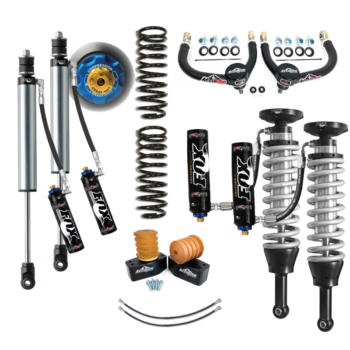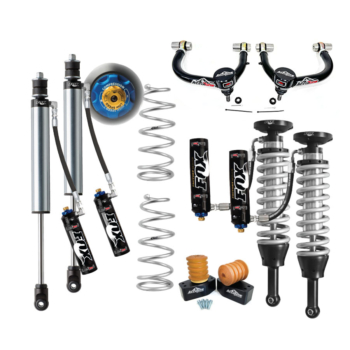Shock Tech: IFP Shocks, Remote Reservoir Shocks and Emulsion Shocks
August 18, 2020
Emulsion Shock
- Oil and Nitrogen are mixed together in the main shock body.
- Mixing shock oil and Nitrogen makes the damping inconsistent.
- Single shock body, no reservoir.
- Very little room for Nitrogen results in higher pressures.
- High pressure = high friction = high temperatures = poor ride.
- Both Nitrogen and shock oil are now being forced through the valving, instead of just oil.
- Very high pressure makes the seals squeeze hard = wear out quicker.
- Emulsion shocks are for someone on a budget, and not concerned about performance.
- Fox discontinued the 2.0 smoothie emulsion shocks.
(IFP) Internal Floating Piston Shock
- Oil and Nitrogen are separated by a floating piston.
- Oil and Nitrogen are both in a single shock body.
- Very little room for Nitrogen. Pressure can get very high.
- High pressure makes the seals squeeze hard = wear out faster and worse ride.
- Not as much shock travel because the IFP needs room to move.
- Nitrogen fill port can be very difficult to access.
- Most 2.0’s are only rebuildable by the factory (expensive, or not an option)
- IFP shock would be adequate for a mostly street driven vehicle that sees very little high speed off-road use. These are considered a “throw away” shock once they are worn out.
- Average price for an OEM fit 2.0 Fox IFP Shock is around $170/each
Remote Reservoir Shock
- Oil and Nitrogen are separated by a floating piston inside the reservoir
- Main shock body dedicated to oil. Secondary reservoir holds some oil and mostly nitrogen.
- Nitrogen in reservoir keeps pressure on the shock oil in the main body. Pressure is stable
- Nitrogen pressure helps with tuning, forcing oil through the main piston valving.
- Stable pressures keep the shocks seals happy, and will last longer than IFP & Emulsion shocks
- Reservoir shocks come in a variety of shock sizes & lengths. 2.0, 2.5, 3.0, 4.0
- Piggyback shocks are also considered a remote reservoir shock
- Reservoir shocks have an option to add a compression adjuster (DSC or Mid Speed)
- Most Fox and King remote reservoir shocks are fully serviceable & tunable
- Remote reservoir shocks should be used on any vehicle that wants better performance and comfort. Endless tuning options allow for the best ride quality.
- Average price point for a 2.0 Aluminum Body Smoothie Shock is around $280.00/each












